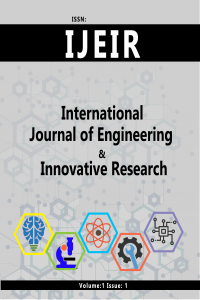Upscaling Results from Optimum Salinity Waterflooding at the Core Scale to a 3D Dynamic Grid
Core Flooding, Corey, 3D
Upscaling Results from Optimum Salinity Waterflooding at the Core Scale to a 3D Dynamic Grid
Core Flooding, Optimum Salinity Water Flooding, 3D Reservoir Model Low Salinity Waterflooding, Corey, Improved Oil Recovery,
___
- O. O. O. O. O. David Alaigba, "Optimized Salinity Water FLooding as an Improved Oil Recovery IOR Scheme in the Niger Delta," in SPE Nigeria Annual International Conference and Exhibition, August 11–13, 2020, Lagos, 2020.
- J. Sheng, "Critical review of low-salinity waterflooding," Journal of Petroleum Science and Engineering, vol. 120, no. ISSN 0920-4105, pp. 216-224, 2014.
- F. S. Allan Katende, "A critical review of low salinity water flooding: Mechanism, laboratory and field application," Journal of Molecular Liquids, vol. 278, no. ISSN 0167-7322, pp. 627-649, 2019.
- T. G. Sorop, S. K. Masalmeh, B. M. Suijkerbuijk, H. A. v. d. Linde, H. Mahani, N. J. Brussee, F. A. Marcelis and A. Coorn, "Relative Permeability Measurements to Quantify the Low Salinity Flooding Effect at Field Scale," in Abu Dhabi International Petroleum Exhibition and Conference, Abu Dhabi, UAE, November 2015, Abu Dhabi, 2015.
- J. H. L. ,. A. E. a. K. D. S. Faisal Awad Aljuboori, "Using Low Salinity Waterflooding to Improve Oil Recovery in Naturally Fractured Reservoirs," Appl. Sci., vol. 10, no. 12, 2020.
- O. O. O. O. David Alaigba, "Correlations for Estimating Change in Residual Oil Saturation During Low Salinity Water Flooding," International Journal of Engineering and Innovative Research, vol. 3, no. 2, pp. 101-114, 2021.
- R. N. C. S. G. M. K. L. W. A. R. T. C. W. a. H. N. Horne, "Steam‐Water Relative Permeability," in World Geothermal Congress, Kyushu‐Tohoku, Japan, 28 May to 10 June, Tokyo, 2000.
- O. O. O. O. Alaigba David, "Correlations for Estimating Reduction in Residual Oil Saturation During Low Salinity Waterflooding," International Journal of Engineering and Innovative, vol. 3, no. 2, pp. 101-114, 2021.
- Yayın Aralığı: Yılda 3 Sayı
- Başlangıç: 2018
- Yayıncı: Ahmet Ali SÜZEN
Applications Of Taguchi Experimental Design Method In The Field Of Textile
Naciye Sündüz OĞUZ, Feyza AKARSLAN
New Expansions In The Economic Production Quantity Model Containing Defective Products
Upscaling Results from Optimum Salinity Waterflooding at the Core Scale to a 3D Dynamic Grid
David ALAİGBA, D. O. ONAİWU, Olalekan OLAFUYİ, Ismaila MOHAMMED
Panic Button Mobile Application Usability Study
Ahmet AKCAKAYA, Samet DİRİ, Suhap ŞAHİN, Rukiye SAYRIM YIKILMAZÇINAR
Noise Evaluation In Terms Of Occupational Health And Safety On The Ring Spinning Machine
